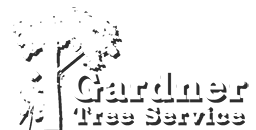In South Louisiana, storms aren’t just a forecast—they’re a season. And when the winds die down and the skies clear, what’s left behind can be a mess of downed limbs, split trunks, and trees leaning dangerously toward homes, cars, or power lines. If you find yourself staring down a tree emergency, here’s what to do next—step by step.
1. Stay Safe and Assess from a Distance
The most important thing to do after a storm is… nothing—until you know it’s safe. Never approach a tree that’s tangled in power lines or partially uprooted. It could shift or collapse at any moment.
Instead, inspect your property from a safe distance. Look for:
-
Trees leaning more than usual
-
Large hanging limbs (called “widowmakers” for a reason)
-
Uprooted trees or those cracked at the base
-
Trees pressing on roofs or blocking driveways
2. Call a Certified Arborist or Emergency Tree Service
Time matters, but so does safety. Call a licensed and insured tree removal company—preferably one with ISA Certified Arborists and experience with emergency storm response. Local companies are often faster to respond and understand the soil and species common to our region.
Pro Tip: Ask if they handle insurance claims. Many reputable companies will document the damage and assist with claims for storm-related tree removal.
3. Don’t Attempt DIY Removal
A fallen tree might look manageable, but removing one with a chainsaw on unstable ground is dangerous—even for seasoned pros. Roots may still be holding tension, branches may be supporting unseen loads, and limbs can snap back unexpectedly.
Unless you’re trained, equipped, and insured, leave the cutting to professionals.
4. Document the Damage for Insurance
Before any cleanup begins, take clear photos and video of:
-
The tree damage
-
The structure it hit (home, fence, garage, vehicle, etc.)
-
The base of the tree and surrounding area
This documentation will help you when filing a homeowners insurance or vehicle damage claim. Some policies cover emergency removal if the tree caused damage to insured property or blocked access to driveways.
5. Clear the Way—Safely
Once the pros remove the hazard, your next priority is cleanup. Most emergency services will:
-
Remove debris
-
Grind stumps (if requested)
-
Haul away large limbs or trunks
-
Provide tree health assessments for surrounding trees
If a tree was lost, it may also be time to think about planting a replacement with stronger storm resilience.
6. Think Ahead: Prevent Future Tree Emergencies
Storm damage isn’t always avoidable—but it can be minimized. Schedule a routine inspection of your trees at least once a year, especially if you notice:
-
Large dead branches
-
Fungal growth near the base
-
Cracks where limbs join
-
Leaning trees or shallow root systems
Preventive pruning, root trimming, or even selective removal of high-risk trees can save you thousands in repairs—or more importantly, protect your family.
Final Thought: Fast Action, Smart Choices
After a storm, it’s tempting to grab a saw and start swinging—but tree removal is dangerous business. The right team can handle the emergency with speed and safety while helping you protect your home, your insurance claim, and your peace of mind.
Need fast help in the Greater New Orleans or Northshore area? Gardner Tree Service is here 24/7 with emergency tree removal you can trust.


